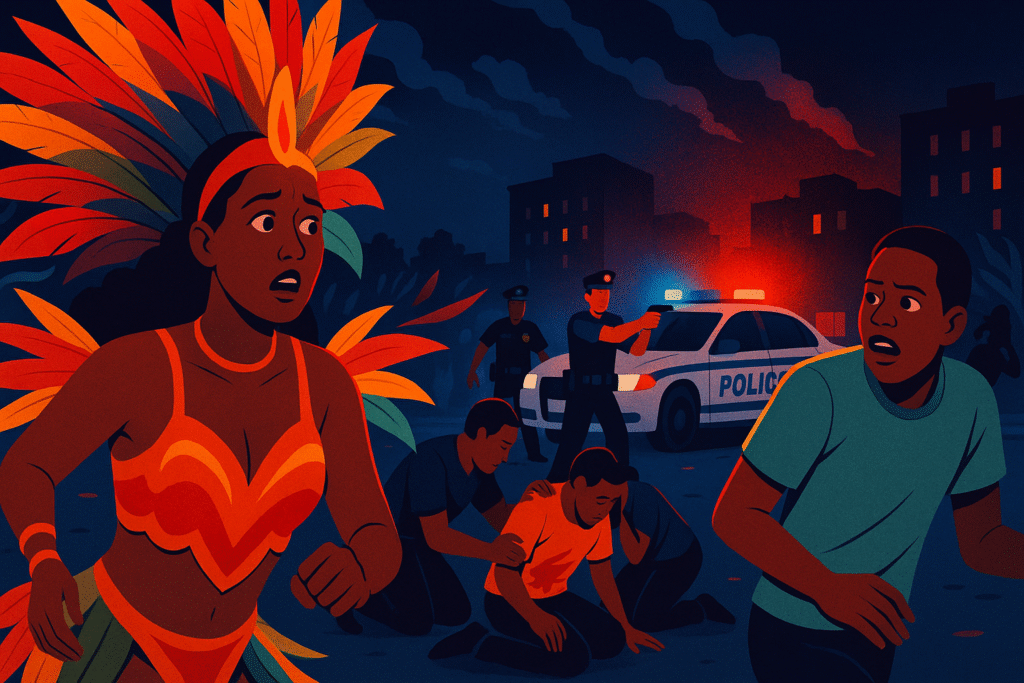The annual West Indian American Day Parade in Brooklyn, a hallmark of New York City’s cultural calendar, was once again overshadowed by violence after a shooting left seven people injured late Monday night. The incident occurred despite increased security measures and a heavy police presence aimed at preventing such outbreaks.
A Celebration with a Troubled History
Held each year on Labor Day, the West Indian American Day Parade draws hundreds of thousands to Eastern Parkway to celebrate Caribbean culture through music, dance, and colorful costumes. Yet the event has frequently been marred by violent incidents, including shootings and stabbings in past years.
In anticipation of this year’s festivities, city officials had pledged tighter security, deploying hundreds of officers and installing additional surveillance systems. Despite these precautions, violence erupted once again.
The Shooting Incident
According to the NYPD, gunfire broke out around 11:00 p.m. just a few blocks from the parade route, triggering chaos as attendees scrambled for safety. Among the victims were five men and two women, aged between 19 and 42. All were transported to local hospitals.
Police reported that none of the injuries are currently life-threatening, though several victims remain in critical but stable condition. Investigators have not made any arrests, and authorities indicated that gang involvement has not been ruled out.
Official and Community Reactions
Mayor Eric Adams strongly condemned the violence, describing it as a “senseless act” that dishonored the cultural significance of the parade. He reaffirmed the city’s commitment to work with law enforcement and community organizations to safeguard future events.
Community leaders also voiced their frustration. “This parade is a showcase of our heritage,” said Marlene Edwards, head of a Brooklyn-based Caribbean cultural association. “We cannot allow acts of violence to overshadow what this celebration stands for.”
Ongoing Security Concerns
While city officials highlighted the improvements in crowd control and security measures, critics argue that broader issues—particularly gun violence and limited community outreach—remain unresolved. Some residents have questioned whether the parade can continue safely in its current form, though many insist it must go on.
“This is more than just a parade; it’s part of our identity,” said David Johnson, a longtime attendee from Queens. “We cannot let a handful of violent acts erase generations of tradition.”
The Road Ahead
The NYPD has appealed to the public for information to help identify the shooter. Meanwhile, local organizations are preparing vigils and community forums to discuss how to ensure the parade remains both a celebration of culture and a safe environment for participants.
For now, the West Indian American Day Parade remains caught between celebration and tragedy—its vibrant displays of culture once again overshadowed by violence, but its community determined to reclaim its spirit in the years ahead.



